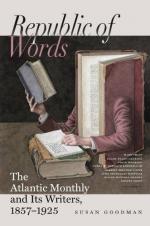These marginal notes, though bringing no clear support to the story of the Cave, were embers, however, of some old fire not entirely extinct,—which emitted a feeble gleam upon the path of inquiry. The name of the chief actor coincided with that of the tradition; the time, that of James the Second, conformed pretty nearly to my conjecture derived from the age of the hawks; and the nature of the crime was what I had imagined. There was just enough in this brief revelation to revive the desire for further investigation. But where was the search to be made? No history that I was aware of, no sketch of our early time that I had ever seen, nothing in print was known to be in existence that could furnish a clue to the story of the Outlaw’s Cave.
And here the matter rested again for some years. But after this lapse, chance brought me upon the highway of further development, which led me in due time to a strange realization of the old proverb that “Murder will out,”—though, in this case, its discovery could bring no other retribution than the settlement of an historical doubt, and give some posthumous fame to the subject of the disclosure.
In the month of May, 1836, I had a motive and an opportunity to make a visit to the County of St. Mary’s. I had been looking into the histories of our early Maryland settlement, as they are recounted in the pages of Bozman, Chalmers, and Grahame, and found there some inducements to persuade me to make an exploration of the whereabouts of the old city which was planted near the Potomac by our first pilgrims. Through the kindness of a much valued friend, whose acquirements and taste—both highly cultivated—rendered him a most effective auxiliary in my enterprise, I was supplied with an opportunity to spend a week under the hospitable roof of Mr. Carberry, the worthy Superior of the Jesuit House of St. Inigoes on the St. Mary’s River, within a short distance of the plain of the ancient city.
Mr. Campbell and myself were invited by our host to meet him, on an appointed day, at the Church of St. Nicholas on the Patuxent, near the landing at Town Creek, and we were to travel from there across to St. Inigoes in his carriage,—a distance of about fifteen miles.
Upon our arrival at St. Nicholas, we found a full day at our disposal to look around the neighborhood, which, being the scene of much historical interest in our older annals, presented a pleasant temptation to our excursion. Our friendly guide, Mr. Carberry, took us to Drum Point, the southern headland of the Patuxent at its entrance into Chesapeake Bay. Here was, at that time, and perhaps still is, the residence of the Carroll family, whose ancestors occupied the estate for many generations. The dwelling-house was a comfortable wooden building of the style and character of the present day, with all the appurtenances proper to a convenient and pleasant country homestead. Immediately in its neighborhood—so near




